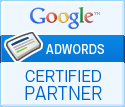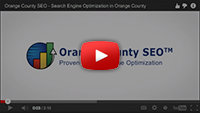What Do I Need To Know About Content for My Website?
Content is a big factor in SEO, because Google has been shifting towards analyzing content quality rather than links and other metrics. There are three main considerations for content on a website:
- - Composition & Quality
- - Linking within the content
- - Use of advertisements
The main thing to be aware of is that long-format content is performing better than ever for search engine rankings. The longer and more in-depth, the better! In a recent study where 10000 search queries were analyzed, the top 10 ranking URLS had:
- - Content pieces averaging 975 words. This is in contrast to the old school of thought that content should be around 400-500 words per piece
- - Average number of internal links was 130, which includes navigational links
- - The top ranking sites had very little if any advertising links. This includes ad services like Adsense
Remember: size matters!
Size includes the overall website and number of pages as well as the different content elements contained on the website. The more pages your website has, the more valuable a resource it is considered, both by users and by the search engine algorithms.
What Are Some of Today’s Important SEO Considerations Regarding Content?
Search engines continually change the rules about how they look at websites and how they rank those sites according to a variety of performance metrics. For today’s search engine optimization success, there are a few important considerations regarding content, including:
- - Content and the quality with which it is written and presented is king
- - Keywords aren’t as dominant as they once were in search engine algorithms
- - In-depth and complex topics carry a lot of weight. These are sometimes referred to as “content clusters”
What Can You Tell Me about Google Hummingbird?
Google released Hummingbird, a complete rewrite of their search algorithm. This was an attempt to take into account the “conversational search”, where users ask either specific questions or very generalized questions that may not fit into a traditional question format, and may not have a traditional search engine results page (SERP) to go along with those questions. In these cases, a comprehensive article on the topic in question may appear at the top of the SERP, because search engines may actually struggle to answer these conversational questions.
It’s easy to see how important content depth and quality is, then, for these conversational search queries. In order to attract the attention, as it were, of Google Hummingbird, it is crucial to pack the website with rich content – in-depth articles, images, video content, and more.
For the text content itself, it is important that the text:
- - Is comprised of well-structured sentences
- - Is filled with a broad vocabulary and impactful statements
- - Be comprehensive, but also be efficient and accurate
“You Shall Know a Word by the Company It Keeps” - John Rupert Firth
By now, you understand that in-depth articles are important for boosting page rank in search engines. So, how does one go about ensuring that the article appears authoritative and reliable? It begins with “proof terms”. These are terms that convey a sense of expertise on any given subject – words that are used by people deeply familiar with the subject at hand. Sometimes called “semantic proof”, these may be:
- - Industry-specific terms
- - Insider words – things only subject experts may be aware of
- - Very specific words or phrases that signify authority about a subject
If you’re not including these types of words in your content, chances are that the search engines will not rank your page very high. These semantic proof clusters are increasingly valuable to promoting good page rank and showing that your content is truly one of authority.
What Do I Need to Know About Linking My Content?
Linking is very important, because it allows search engines to find other pages, both internally to your own site and external resources you link to or that link to your content. This linking also tells the search engines how useful your content is for the user. Different linking strategies can be employed, including:
- - Linking from one page to another within the website
- - Using Wikipedia-style link techniques – in-line links to other internal or external resources
- - External links to trusted, authoritative sources that support your own content
- - Self-referential links – navigation-based links from footers, headers, sidebars, etc.
It is crucial that webmasters do periodic housekeeping, such as fixing broken or missing links. Remove those that are unnecessary and replace with ones that point to good resources, both within the website or toward outside sources.
Using Images to Boost Search Engine Rankings
Google rewards websites that use images in addition to text-based content. Remember the concept of “rich content”. Images used should be unique and original for best SEO results – if they have never been used before, the search engines greatly prefer this in their algorithms.
Don’t be afraid to use a lot of images with your content. The best-ranking sites, on average, use 6 images per page of content. This may seem like a lot, but the search rankings bear this out.
In addition to using images as part of the rich content approach, it is also important to optimize those pages and images for SEO purposes. This may include:
- - Ensuring keywords or key phrases are part of the image’s file name (“keyword-phrase-here.jpg”)
- - Related or proof terms in the image’s alt text
- - Captions or descriptions surrounding the image, including important keywords or proof terms
The important takeaway: Use more original images in your content!
Are Ads Really Bad for My Website’s Search Engine Rankings?
Do you see us using any on our site? We're crushing it in search. Among other things, this isn't one of the things that's going to help your rankings. So in short, yes – ads rarely appear on the pages that rank at the top of SERPs. At most, single ads may appear on the pages ranked in the top 30 of search results.
If you can avoid it – don't use ads on your website.
If you must use ads, there are a couple of tips. First, limit their usage – try to use the minimum you can get by with. Place those ads below the fold so they don’t take up valuable real estate where your original content should be. Finally, avoid clutter and redundancy. Banner ads and the like cause pages to load slowly, display poorly on some devices, and give the website a cluttered look that drives users away.
Back to Online Learning Center
- Video 1 - Intro & Mindset for SEO & Digital Marketing
- Video 2 - Does Your Content Deserve to Rank in Google?
- Video 3 - On-page SEO Technology Ranking Factors
- Video 4 - On-Page SEO User Metrics CTR, TOS, BR
- Video 5 - OnPage SEO Content - Quality, Semantic Relevance, Proof
- Video 6 - How To Create Perfect SEO Content For Google
- Video 7 - Advanced Off-page SEO Ranking Factors & Link Building
- Video 8 - Advanced Social Signals as SEO Ranking Factors
- Video 9 - The Brand Factor & How Google Rewards Brands

















